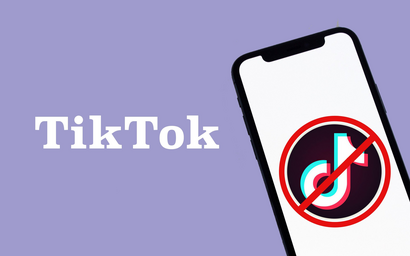*Trigger warning, this article discusses eating disorders
Back in April, when we were all settling into quarantine, I turned to Tik Tok for an escape from the craziness in the world around me. At the peak of my Tik Tok addiction, I stumbled upon a “What I Eat in a Day” video on my For You Page. A 16-year-old girl was showing little clips of her meals and snacks throughout the day with a sparkly filter on top. Thinking nothing of this, I kept scrolling down my For You Page.
Soon enough, my For You Page was flooded with “What I Eat in a Day” videos. I quickly realized a common theme among these videos: the girls were trying to lose weight and they were not eating much. A coffee for breakfast. A protein bar for lunch. A small salad for dinner. That could be it (or even less) for one day.
Upon further investigation, I turned to the comments. Different users were having conversations in the comments, critiquing or complimenting the creator’s food choices and talking about calorie counting and macronutrients. Some people were saying they wished they ate that healthy and looked like the creator in the video.
Over time, I came to realize just how dangerous these videos could be. Ultimately, this trend glorifies eating disorders, with their aesthetic displays of pro-anorexic behavior. Followers may alter their eating habits to look like the girls in the videos. Eating disorders are extremely competitive, which makes this trend even more concerning. People may try to eat less than what they see in the videos in order to achieve a certain body type.
“What I Eat in the Day” is not the only problematic trend that could possibly promote eating disorders on Tik Tok. Users often post their exercise routines, which could also be competitive. In addition, unqualified creators, who have no nutrition background or degree, post diet tips that worked for them. These tips can include anything from drinking apple cider vinegar once a day to substituting green peppers for bread in sandwiches, which could actually be harmful to viewers.
People aren’t choosing to have this content on their For You Pages. The algorithm picks it for them, making it unavoidable. You can click “not interested” on a video, but similar content can still resurface. The people that are most vulnerable to these trends are young users. A large portion of Tik Tok’s audience is teenagers, who may be unaware of their nutritional needs and risk for eating disorders. Social media tends to promote insecurities in young users, and it is obvious Tik Tok has been exacerbating this effect.
There’s nothing wrong with encouraging a healthier and happier lifestyle. However, this content fails at doing so and rather perpetuates harmful diet culture. And this problem still persists. Tik Tok has crossed a line, and they must institute guidelines to prevent this content from popping up on young users’ timelines. There should be trigger warnings on content related to eating disorders. More importantly, Tik Tok needs to monitor their content and delete harmful content.
If you know someone or are personally struggling with an eating disorder, consider contacting the National Eating Disorder Association Helpline.


